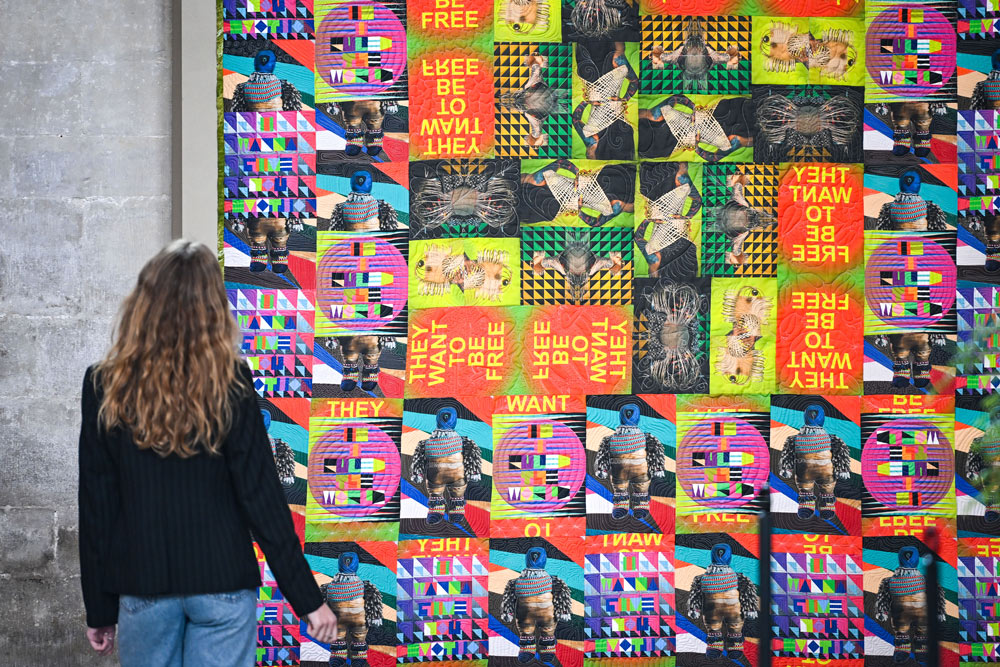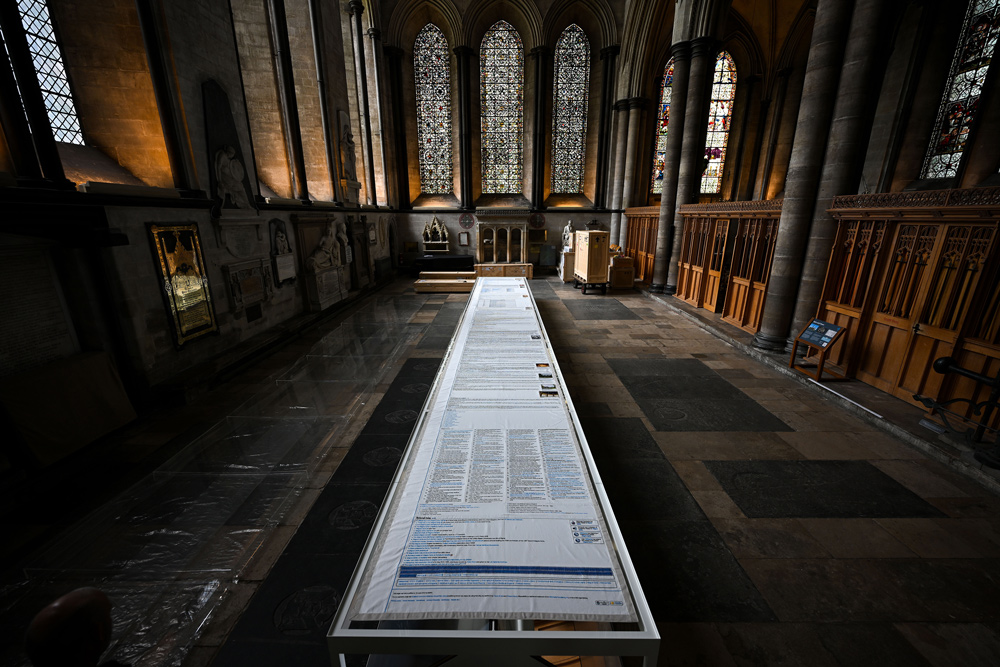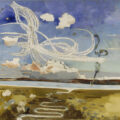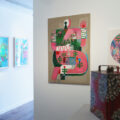With conflict around the world dominating the news and the unsettling debate around immigration, a timely contemporary art exhibition is currently showing in Salisbury Cathedral.
Curated by the cathedral’s visual arts curator, Beth Hughes, To Be Free not only showcases work by leading contemporary artists like Ai Weiwei, Yinka Shonibare, Mona Hatoum and Cornelia Parker, but also explores what freedom is, what it means to be free, how it feels to be free, and the plight of those who are not free.

Jeffrey Gibson’s They Want to be Free 2021
Credit: Finbarr Webster
In some cases, the artists themselves have seen freedom challenged at first hand.
One of the exhibition’s centrepieces is Cornelia Parker’s Magna Carta (An Embroidery), a 13-metre-long embroidery installation depicting the Magna Carta Wikipedia pages. This huge piece is the perfect complement to Salisbury Cathedral’s rare 1215 Magna Carta, which is on display in a newly updated exhibition in the Chapter House.
Magna Carta (An Embroidery) was an act of democracy in its making, with over 200 hand-stitch portions sewn by civil rights campaigners, MPs, lawyers, barons, artists and prison inmates. Thirty-six prisoners from 13 different prisons in England contributed to the piece under the supervision of the social enterprise Fine Cell Work.
Still images from the pages were sewn by members of the Embroiderers Guild, Royal School of Needlework and Hand and Lock. The youngest contributors came from La Retraite Roman Catholic Girls School in London.
Another astonishing work on show is Yinka Shonibare’s Justice For All. The sculpture was exhibited for the first time in the UK during the summer of 2020 in response to the tragic killing of George Floyd.
This towering figure is a reimagining of F.W. Pomeroy’s Lady Justice, a statue which stands above the dome of The Old Bailey. Shonibare has replaced Lady Justice’s head with that of a globe, to ask us to consider justice for citizens across the world. The scales of justice hang from her left hand and a swift sword of authority is in her right hand.
Justice for All faces Gabriel Loire’s Prisoners of Conscience window at the east end of the cathedral, which is dedicated to those who suffer or have been imprisoned for their personal, religious or political beliefs.
A smaller but equally compelling work is Ai Weiwei’s porcelain Free Speech Puzzle 2015. The interlocking ceramic pieces, laid out to resemble a map of China, are each decorated with two hand-painted Chinese characters which translate to ‘free speech’.
Each piece represents a distinct geographic and ethnic region of China; the artist is asserting that everyone, wherever they are, has the right to free speech.
In the south transept, Mona Hatoum’s Map (mobile) 2019, challenges ideas of ownership and freedom. All around the world there are contested borders and lines drawn on a map often take a political stance.
In Mona Hatoum’s huge glass mobile of the world, the countries of the world change formation with the air flow in the cathedral. Places that were once far away from one another are now next to each other, a reflection on how close we may be culturally to other countries despite being geographically distant.
Other artists featured in the exhibition are Lucy Jones, who explores the challenges of gender, age and disability and Jeffrey Gibson, whose textile work They Want to be Free 2021 reflects his Choctaw-Cherokee heritage.
While not wanting to be defined as a disabled artist, Lucy Jones’ cerebral palsy does inform her style. She often works on the floor, her physicality influencing how she makes her marks on the canvas.
Gibson, on the other hand, incorporates his questions into his piece. Phrases like ‘they want to be free’, and ‘if I ruled the world’ are colourfully stitched into his quilt, a natural part of its colourful geometric patterning, repurposing an everyday object to make a political statement.
Speaking about the exhibition, Beth Hughes, said: “Salisbury Cathedral in 2023 is exactly the right time and place to be thinking about what liberty means in contemporary Britain.
“As the home of a Magna Carta and as the cathedral that moved to gain its own freedom, the fight for justice is built into the foundations of the building and as world events of the last few years have seen our freedoms curbed, exposing societal differences, we want to continue this story, conveying hope for the future.
“Each artwork brings a fresh perspective of what freedom means to us.”
To Be Free runs until September.









Leave a Reply